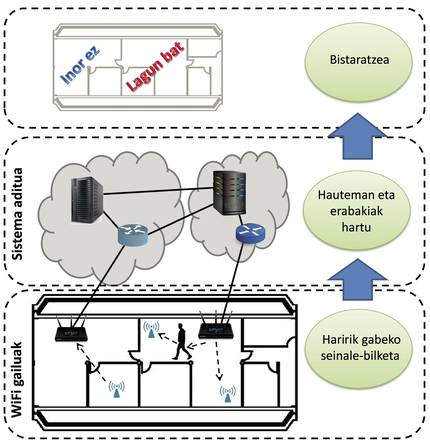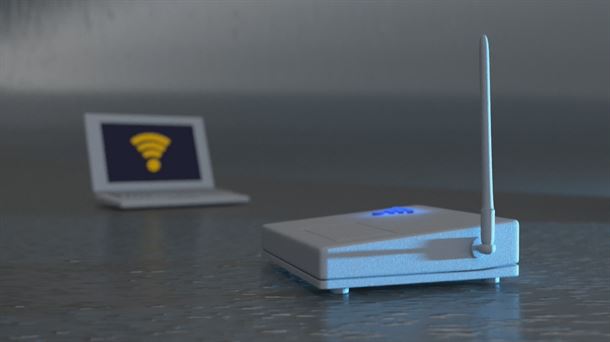Wifi: how to detect human presence
2019/09/01 Sobrón Polancos, Iker - EHUko Bilboko Ingeniaritza Eskolako ikertzailea | Landa Sedano, Iratxe - EHUko Bilboko Ingeniaritza Eskolako irakaslea Iturria: Elhuyar aldizkaria
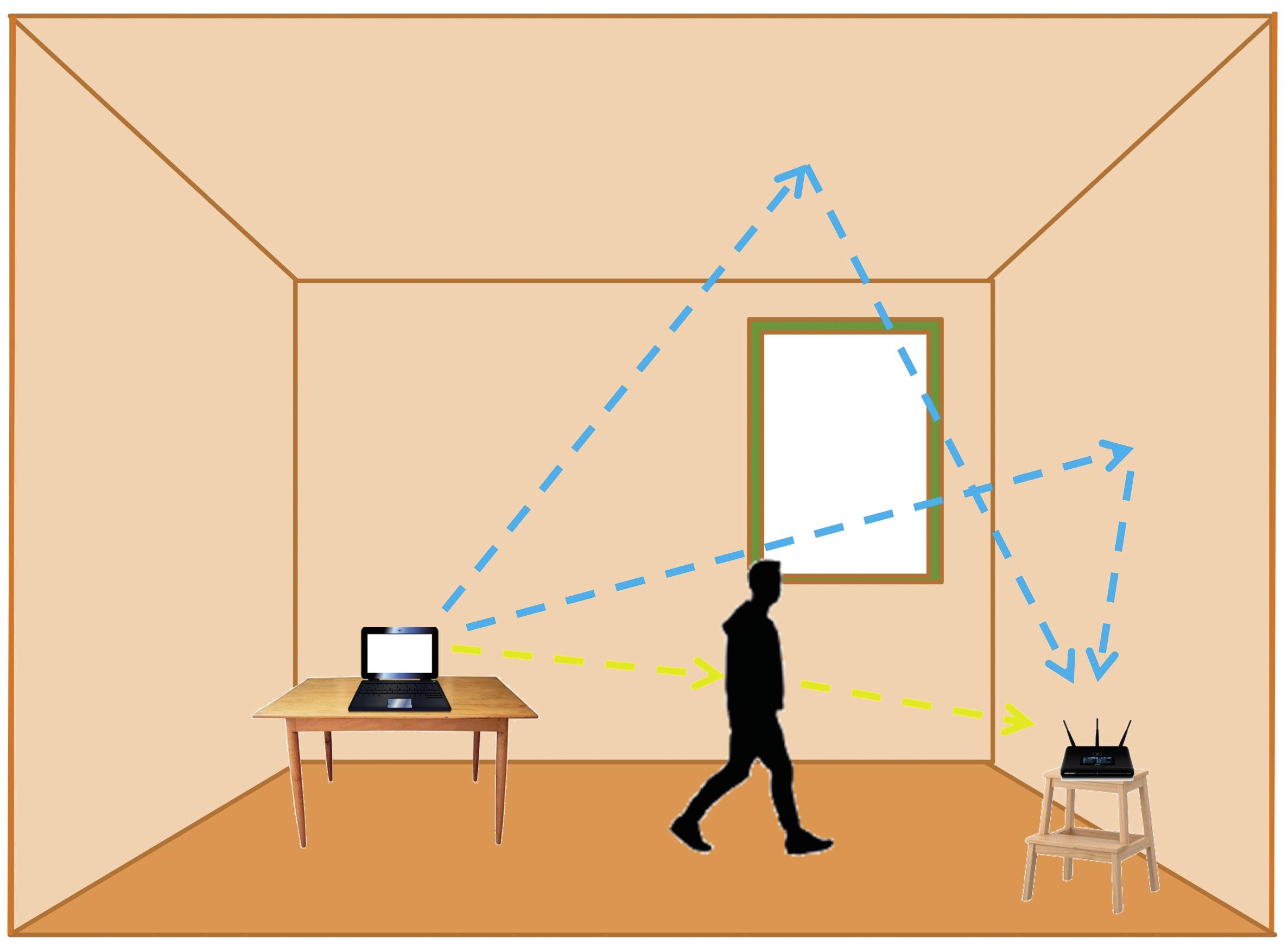
The wifi signal: besides being a communication system, it is a radar
Currently we can find the wifi connection anywhere in a city. In wifi communication, Wi-Fi devices use RF electromagnetic waves to share data. That is, when we download a video from Youtube or send an email, the invisible radio frequency waves that contain information will make different displacements between the electronic device (a computer, a mobile, etc.) and the router antenna of our environment. On this path of expansion, airborne waves can hit and cross walls, people, or other objects in the environment. The processes of entablation and crossing are called reflections and refractions. Normally, each reflection or refraction process is represented by lightning between connected devices. In this way we can call the collection of all rays as a wireless communication channel. The channel has great importance in the level and quality of the wifi signal received. Therefore, if we observe the signal that reaches the wifi receiver, we can extract a great information about the wireless communication channel and therefore about the environment [1].
In fact, when a person moves between the transmitter and the receiver of a wifi communication, you can change the level of the wifi signal. Especially because a person's presence in radio broadcasting is an obstacle, which can cause changes in the wireless communication channel. That is, each new ray can produce power changes in the received signal. Therefore, if we analyze the incidents of the signal level that is received, we can know what happens around a router. Among others, the number of people in this environment.
When a room is empty, the direct beam between emitter and receiver will be the main one. Therefore, the signal normally received will be stable over time. However, when some people move inside the room, the rays that model the wifi signal will vary direction or intensity depending on the number of obstacles found. Therefore, different signal characteristics can be investigated to know the wireless channel. For example, power level, phase and signal amplitude, Doppler frequency, etc. The analysis of how these characteristics vary over time allows us to assess what has caused them.
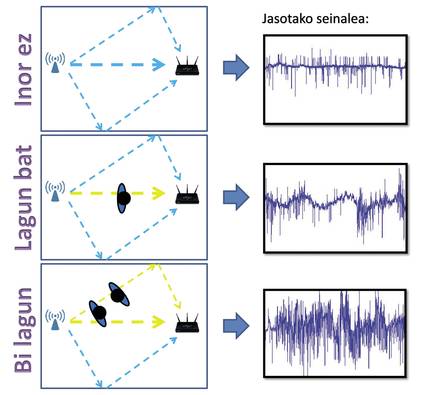
Precisely, in the TSR Lab research group we are investigating how we can exploit wireless channel measurements to detect human presence and quantify the number of people. To do this, we analyze the behavior of the channel using mathematical tools. For example, statistics, information theory, frequency analysis and spectral analysis are the most widely used tools. The results obtained through mathematical analysis are used to feed an expert system that counts the number of people.
Artificial intelligence to count the number of people
In recent years artificial intelligence is increasingly present in our lives. Every day we can find examples such as voice recognition systems, automatic translators or sending personalized ads to Internet users. An artificial intelligence system is only a computer based on observation and reasoning, capable of behaving in a human way. To do this, expert systems solve a problem using complex mathematical algorithms (neural networks, Bayesian networks, bioinspired algorithms) and formal logic, based on a series of parameters that measure the environment. Systems normally study observation statistics, looking for the most likely solution to solve a problem [2]. For example, a chess based expert system is introduced with numerous chess plays as observation. Thus, the system, through statistics, can find the best move and win the world chess champion.
Focusing on the detection of human presence, the expert system proposed by us is based on the ability to count people close to the coverage area of the wifi communications system. In this case, the observations of the system are electrical signals collected in the receiver antenna, generated by the radio waves that travel from the transmitter to the receiver. After mathematically learning the behavior of signals, an expert system collects the collected information and, using the acquired knowledge, determines the number of people in one place. The degree of success of the system will depend on the learning capacity of the expert system. And how can the system learn to perceive people? To do this we have to prepare the system so that it knows the appearance of the signals when there are one, two or more people in one place.
Let's take a simple example. Suppose a child who doesn't know how to tell we show him several photos in which two or more people appear and we show him the difference between those that appear two or more people. If we show another photo of two people to the trained child, surely that child will classify it well (there are two options: two or more people appear in the photo). We perform a procedure similar to the example given with the expert system, that is, we teach you what are the main characteristics of the wifi signal when in the environment studied there are between zero and four people. With this learning model, the developed expert system manages to classify 0-4 people in the middle, with average success odds of 87% and 84%, using neural networks [3] and support vector machines [2], respectively.
From the research point of view, one of the most important issues is the reliability of the system. At this time, the degree of failure is largely conditioned by the training and learning capacity of the expert system. In short, the diversity of environments that we can find in our field makes it necessary to adjust the system of perception of the human presence to different environments. To do this, it is necessary to take previous measures for each environment.
Applications of the human presence detection system
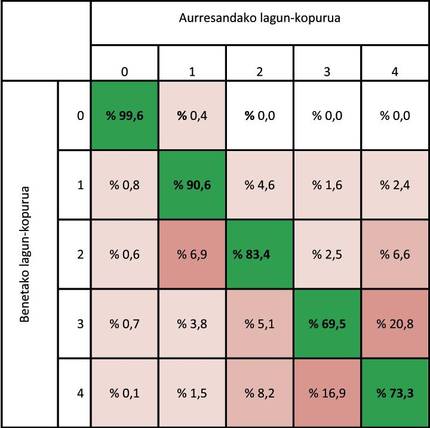
As already mentioned, at this time anyone can find wifi connections in cities. Therefore, the proposed system could be used anywhere, with a wifi connection. Moreover, any wifi system is connected via the Internet. This means that anyone can access your system from anywhere in the world and therefore can know what happens in the environment of your wifi receiver.
In this sense, the main applications are related to remote monitoring. For example, the control of customers in stores [4], the detection of unauthorized entries [5] or the care of elderly people in sheltered homes [6]. However, in addition to the aforementioned applications, an expert system based on wifi signals could be developed for other types of monitoring, such as the identification of emotions (sadness, joy, anger) or the follow-up of breathing and heartbeat [7][8].
Bibliography

Gai honi buruzko eduki gehiago
Elhuyarrek garatutako teknologia




